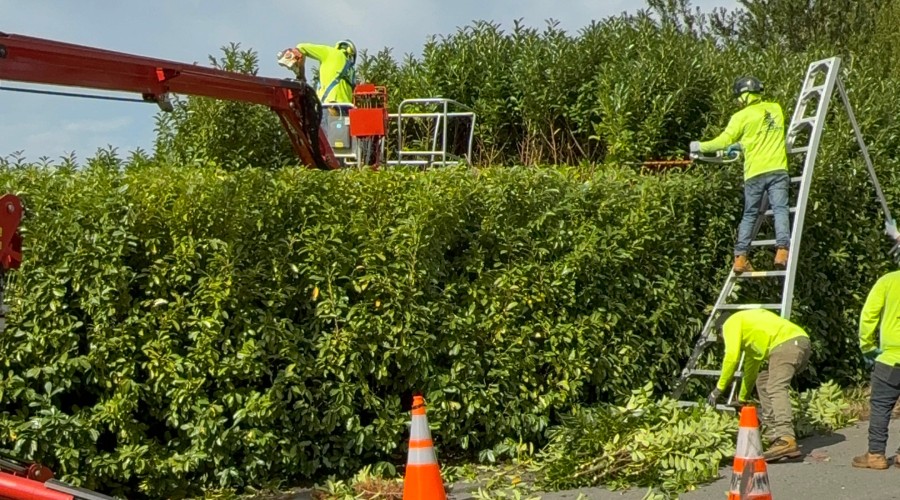Trees are more than just beautiful parts of nature — they are living investments that provide shade, privacy, oxygen, and aesthetic value to any property. Yet, like any other living organism, trees require consistent care and attention to stay strong, healthy, and safe. Without proper maintenance, trees can become diseased, unstable, or even dangerous. This comprehensive guide explores everything you need to know about tree care and maintenance — from seasonal pruning and fertilizing to when to call in a professional arborist.
Why Tree Care Is Essential for Every Property Owner
Trees play a critical role in maintaining environmental balance. They filter the air, prevent soil erosion, and provide habitats for wildlife. On residential and commercial properties, trees add character and increase curb appeal. However, when trees are neglected, they can cause more harm than good — leading to property damage, pest infestations, or injury. Regular maintenance ensures trees continue to benefit your landscape safely and beautifully.
Understanding the Basics of Tree Maintenance
Tree maintenance involves more than just trimming branches. It’s a holistic approach that includes proper watering, fertilization, inspection, and protection against diseases and pests. Here are some essential practices to maintain healthy trees throughout the year:
- Regular Pruning: Removing dead or overgrown branches promotes healthy growth and prevents hazards during storms.
- Mulching: Applying mulch helps retain soil moisture, regulate temperature, and prevent weeds from competing for nutrients.
- Proper Watering: Trees need deep, consistent watering — especially young or newly planted ones — to establish strong root systems.
- Soil Care: Healthy soil is the foundation of a thriving tree. Aerate compacted soil and test it periodically to maintain nutrient balance.
- Fertilization: Applying the right fertilizer at the right time encourages vigorous growth and enhances tree resilience.
Tree Trimming and Pruning — The Key to Long-Term Health
Pruning is both an art and a science. Done correctly, it improves the structure, appearance, and safety of your trees. Done incorrectly, it can stunt growth or invite disease. Experts recommend pruning during the dormant season (late fall to early spring), when trees are less stressed. Focus on removing dead wood, crossing branches, or weak limbs that could pose risks during wind or snow.
For young trees, structural pruning helps shape strong frameworks early on. Mature trees benefit from selective thinning, which allows better light penetration and air circulation through the canopy. Always use sharp, clean tools and avoid cutting too close to the trunk to prevent infection.
Common Tree Health Problems and How to Prevent Them
Even the most well-cared-for trees can encounter problems. Recognizing symptoms early can make the difference between saving or losing a tree. Some of the most common tree health issues include:
- Pest Infestations: Insects like aphids, beetles, and borers can cause severe damage. Regular inspections and natural pest control methods can help manage them.
- Fungal Diseases: Leaf spots, mildew, or cankers often thrive in damp conditions. Prune affected areas and improve air circulation to reduce risk.
- Root Rot: Overwatering or poor drainage can suffocate roots, leading to decay. Ensure proper irrigation and soil aeration.
- Environmental Stress: Extreme temperatures, drought, or pollution can weaken trees. Mulching and seasonal watering adjustments can help trees recover.
The Importance of Seasonal Tree Care
Each season brings unique needs for your trees. By following a simple annual tree care plan, you can ensure lasting health and beauty:
Spring
Inspect trees for winter damage and prune dead branches. Apply a balanced fertilizer to promote new growth and watch for early signs of pests or disease.
Summer
Maintain consistent watering, especially during hot and dry spells. Add mulch around the base of trees and monitor for leaf discoloration or wilting.
Fall
Clean up fallen leaves, which can harbor fungi or insects. Lightly prune if needed and prepare young trees with protective wraps for winter.
Winter
Winter is an ideal time for major pruning since trees are dormant. Remove hazardous limbs and plan for tree removals or new plantings in spring.
Tree Removal and Stump Grinding
While every effort should be made to preserve healthy trees, sometimes removal becomes necessary. Dead or dangerously leaning trees can pose safety threats during storms or high winds. Professional tree removal ensures safe dismantling without damaging nearby property. After removal, stump grinding is recommended to eliminate tripping hazards and prevent new growth from emerging.
When to Call a Professional Tree Service
Tree maintenance can be complex and risky, especially when it involves large trees or heavy equipment. It’s always wise to call a certified arborist if you notice:
- Branches growing too close to power lines or structures
- Visible cracks or splits in trunks
- Sudden leaning after heavy rain or wind
- Signs of rot, decay, or pest infestation
- Storm damage requiring emergency cleanup
Certified tree care professionals have the training and equipment to assess risks safely, perform precision pruning, and remove trees efficiently without endangering people or property.
Eco-Friendly Tree Care Practices
Modern tree care isn’t just about maintenance — it’s about sustainability. Many homeowners now prefer eco-friendly methods to protect both their landscape and the environment. Practices like organic mulching, natural pest control, and wood recycling are excellent ways to reduce waste and promote healthy ecosystems.
When a tree must be removed, the wood can often be repurposed into mulch or firewood. Likewise, planting native species helps support local wildlife and reduces the need for chemical fertilizers and irrigation.
How Tree Care Affects Property Value and Safety
Healthy, well-maintained trees can increase property value by as much as 10%. They enhance curb appeal, provide shade that lowers energy bills, and improve overall livability. Conversely, neglected or damaged trees can quickly become liabilities. Routine inspections and trimming can prevent costly accidents or emergency removals down the line.
DIY Tree Maintenance Tips
If you prefer to handle small tasks yourself, keep these safe and simple practices in mind:
- Use clean, sharp tools for light pruning.
- Wear gloves and safety goggles to protect yourself from debris.
- Never attempt to cut large branches or climb tall trees without proper gear.
- Water deeply once a week rather than shallow, frequent watering.
- Apply 2–4 inches of mulch around the tree base, but keep it away from the trunk.
Remember, while DIY maintenance works for smaller trees, larger jobs involving power tools or climbing should always be left to professionals.
Planning for the Future: Tree Planting and Selection
Tree care starts with smart planting choices. Select species that thrive in your local climate and soil conditions. Consider factors like mature size, root spread, and light requirements. Planting too close to buildings or utilities can cause future problems, while choosing native trees reduces long-term maintenance needs.
Some excellent options for the Pacific Northwest include Douglas fir, western red cedar, bigleaf maple, and of course, the iconic western hemlock. Each offers unique beauty and ecological benefits when planted and maintained properly.
Final Thoughts: A Healthy Tree Means a Healthy Property
Tree care is a long-term investment in your property’s safety, beauty, and environmental health. Whether you’re a homeowner, landscaper, or property manager, understanding the basics of tree maintenance can help you make informed decisions year after year. Regular inspection, pruning, and professional guidance are the keys to keeping your trees strong for generations to come.
Need Expert Help with Tree Maintenance?
For those in Snohomish, WA and nearby communities, professional assistance is always available. A certified, insured, and experienced team can handle trimming, removal, and stump grinding with care and safety.
Western Hemlock Tree Services provides expert tree care solutions throughout Snohomish County. Whether it’s a simple trim or a complex emergency removal, our team ensures every job is done right.
📍 Address: 18305 59th AVE SE, Snohomish, WA 98296
📞 Phone: +1 425-374-8996
📧 Email: claudia@westernhemlockts.com
Whether you choose to handle basic maintenance yourself or call a trusted tree service, consistent care will ensure your trees remain strong, safe, and beautiful for decades to come.



